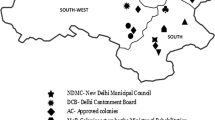Abstract
Quality of life must be measured within a multidimensional framework preferably inclusive of objective and subjective indicators that add to the information gathered through economic or monetary-only indices. This paper reports on the first application of the fuzzy set approach to quality of life measurement. The application uses the 2012 data for Macedonia collected by Eurofound during the third wave of the European Quality of Life Survey. The fuzzy approach, developed in the early 1990s, proves to be highly consistent and efficient in this empirical application when compared to distribution analyses. In addition, it is also statistically robust. Both the theoretical background and the application of the approach are described. The fuzzy set provides relevant added value for both data analysts and data users as it presents results easily and concisely, facilitates comparison and cross-reference between dimensions, and allows for the consolidation of monetary and non-monetary aspects of life quality.


Similar content being viewed by others
Notes
JRR is based on the sampling structure and takes into account stratification and clustering. EQLS 2012 is based on 16 Strata (8 NUTS3 regions by urban/rural) and 100 PSUs (primary selection units) (see Table 6, p. 17, Eurofound 2013), which constitute a good basis for JRR variance estimation.
For instance, while analysing poverty dynamics, it would be interesting to observe the intersection of the two dissimilar sets ‘being poor at time t − 1’ and ‘not being poor at time t’, i.e. the fuzzy measures of ‘exit from poverty’.
References
Aassve, A., Betti, G., Mazzuco, S., & Mencarini, L. (2007). Marital disruption and economic well-being: A comparative analysis. Journal of the Royal Statistical Society, Series A, 170(3), 781–799.
Belhadj, B. (2014). Employment measure in development countries via minimum wage and poverty: New fuzzy approach. Opsearch. doi:10.1007/s12597-014-0176-3.
Betti, G., D’Agostino, A., & Neri, L. (2011). Educational mismatch of graduates: A multidimensional and fuzzy indicator. Social Indicators Research, 103(3), 465–480.
Betti, G., Gagliardi, F., Lemmi, A., & Verma, V. (2012). Sub-national indicators of poverty and deprivation in Europe: Methodology and applications. Cambridge Journal of Regions, Economy and Society, 5(1), 149–162.
Betti, G., Gagliardi, F., Lemmi, A., & Verma, V. (2015). Comparative measures of multidimensional deprivation in the European Union. Empirical Economics. doi:10.1007/s00181-014-0904-9.
Betti, G., & Verma, V. (1999, August 27–31). Measuring the degree of poverty in a dynamic and comparative context: A multi-dimensional approach using fuzzy set theory. In Proceedings, ICCS-VI, Lahore, Pakistan (Vol. 11, pp. 289–301).
Betti, G., & Verma, V. (2008). Fuzzy measures of the incidence of relative poverty and deprivation: A multi-dimensional perspective. Statistical Methods and Applications, 12(2), 225–250.
Cerioli, A., & Zani, S. (1990). A fuzzy approach to the measurement of poverty. In C. Dagum & M. Zenga (Eds.), Income and wealth distribution, inequality and poverty (pp. 272–284). Berlin: Springer.
Cheli, B., & Lemmi, A. (1995). A totally fuzzy and relative approach to the multidimensional analysis of poverty. Economic Notes, 24, 115–134.
Eurofound. (2003). Monitoring quality of life in Europe, Luxembourg, Office for Official Publications of the European Communities. http://www.eurofound.europa.eu/publications/htmlfiles/ef02108.htm
Eurofound. (2009). Second European Quality of Life Survey: Overview. Publications Office of the European Union, Luxembourg.
Eurofound. (2010). Subjective well-being in Europe. Luxembourg: Office for Official Publications of the European Communities. http://www.eurofound.europa.eu/pubdocs/2009/108/en/1/EF09108EN.pdf
Eurofound. (2013). 3rd European Quality of Life Survey technical report, Working document for The European Foundation for the Improvement of Living and Working Conditions, Prepared by GfK EU3C. http://www.eurofound.europa.eu/surveys/eqls/2011/documents/technicalreport.pdf
Eurofound. (2014). Trends in Quality of Life: Former Yugoslav Republic of Macedonia: 2007–2012. Dublin: Eurofound.
Eurostat. (2002). European social statistics: Income, poverty and social exclusion, 2nd report. Luxembourg: Office for Official Publications of the European Communities.
Filippone, A., Cheli, B., & D’Agostino, A. (2001). Addressing the interpretation and the aggregation problems in totally fuzzy and relative poverty measures, ISER Working Paper Series number 2001–22, University of Essex.
Guio, A.-C. (2009). What can be learned from deprivation indicators in Europe? Eurostat methodologies and working paper. Luxembourg: Eurostat.
Klir, G. J., & Yuan, B. (1995). Fuzzy sets and fuzzy logic. Englewood Cliffs: Prentice-Hall.
Lemmi, A., & Betti, G. (Eds.). (2006). Fuzzy set approach to multidimensional poverty measurement. New York: Springer.
Maggino, F., & Ruviglioni, E. (2009). Obtaining weights: From objective to subjective approaches in view of more participative methods in the construction of composite indicators. In EUROSTAT, Brussels—Belgium, February 18–20, 2009, Eurostat—European Commission (pp. 37–46).
Nussbaum, M., & Sen, A. (Eds.). (1993). The quality of life. Oxford: Oxford University Press.
Phillips, D. (2006). Quality of life: Concept, quality, practice. London: Routledge.
Rapley, M. (2003). Quality of life research: A critical introduction. London: Sage.
Verma, V., & Betti, G. (2011). Taylor linearization sampling errors and design effects for poverty measures and other complex statistics. Journal of Applied Statistics, 38(8), 1549–1576.
Whelan, C. T., Layte, R., Maitre, B., & Nolan, B. (2001). Income, deprivation and economic strain: An analysis of the European community household panel. European Sociological Review, 17, 357–372.
Zadeh, L. A. (1965). Fuzzy sets. Information and Control, 8, 338–353.
Author information
Authors and Affiliations
Corresponding author
Rights and permissions
About this article
Cite this article
Betti, G., Soldi, R. & Talev, I. Fuzzy Multidimensional Indicators of Quality of Life: The Empirical Case of Macedonia. Soc Indic Res 127, 39–53 (2016). https://doi.org/10.1007/s11205-015-0965-y
Accepted:
Published:
Issue Date:
DOI: https://doi.org/10.1007/s11205-015-0965-y



